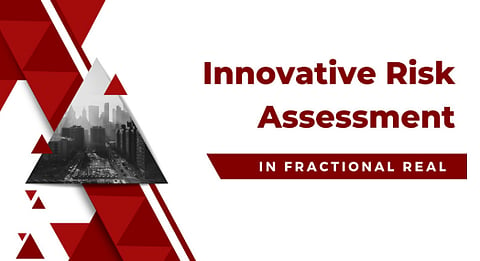

In the fast moving digital world, Girish Wali's latest research provides a comprehensive approach to assessing risk in fractional commercial real estate investments, by harnessing cutting edge technologies such as deep learning and fog computing. In a field increasingly characterized by market fluctuations and unpredictability, these innovations offer a more accurate and dynamic way to evaluate risks. The work stands out by integrating real-time data processing capabilities to address inherent challenges in traditional risk assessment models.
Fractional real estate investment is becoming a highly preferred option for individuals who would want to acquire ownership of properties without necessarily investing a lot of money. The purchase of shares in commercial properties enables the democratization of access to the real estate market. This type of investment, however, presents unique risks that may include unstable market conditions, vacancies in the properties, and economic downturns. Accurate assessment of such risks is critical to help investors make informed decisions and manage losses.
Conventional risk assessment methods, relying on historical data and statistical models, often struggle to capture complex, nonlinear patterns in real estate data. Deep learning, particularly with Convolutional Long Short-Term Memory (CLSTM) networks, improves this by recognizing spatiotemporal patterns across property characteristics, financial indicators, and investor behaviors. Using CLSTM to process diverse data enables the identification of intricate relationships essential for accurate risk prediction. Training on a dataset of over 30 real estate features provides nuanced insights, surpassing traditional statistical methods.
In this proposed model, fog computing can be vital to the source process by enabling computation near the sources of the data such as deployed Internet of Things devices at a given property site as a means to counter latency issues and bandwidth, among others associated with cloud computing. The architecture here is decentralized where IoT devices gather data from the environment sensors, security cameras, and energy meters, and these nodes will process that information to decide if the task can be processed locally or should be offloaded to the cloud. This kind of localized processing minimizes latency while enhancing the ability of the model to make timely risk assessments critical for fast-paced real estate markets.
The strength lies in a clean pipeline of several preprocessing steps which ensures that a pipeline of heterogeneous data coming in from different places, such as historical prices and financial trends or macroeconomic indicators, is cleaned, normalized, and feature engineered to ensure coherence and precision. Mechanisms such as sliding window mechanisms structure the data into time series for the CLSTM network modeling, while complex noise reduction strategies such as moving average calculations and volatility indexing further enhance data quality, thus minimizing errors and ensuring expected risk predictions.
The proposed model is evaluated based on widely recognized performance metrics like precision, recall, F1-score, and Root Mean Square Error (RMSE). From the experimental results, it was clear that it was better than the existing solutions in terms of prediction accuracy and computational efficiency. It is therefore a strong candidate for real-world applications, particularly in sectors where accurate risk assessment is important. The model beyond predictions offers an understanding of what underlying risk factors are associated with fractional investments in terms of location-specific hazards, regulatory changes, or shifts in market sentiment. And as the model gets more data and more refined algorithms, it will change with the changing trends and adapt to emerging ones, giving better forecasts.
The research paves the way for future advancements in machine learning applications for real estate by leveraging deep learning and fog computing to address the limitations of traditional risk assessment techniques while opening new avenues for integrating real-time analytics into investment strategies. Further improvements could involve incorporating more diverse data sources, such as global economic indicators or alternative data streams, and exploring different deep learning architectures. This continuous evolution would help investors stay ahead in an ever-changing market, making risk management more proactive and data-driven..
All things considered, it is a milestone in the realm of real estate risk analysis for fractional investments, as initiated by Girish Wali. The model leverages the powerful deep learning methodology and the versatility of fog computing to set an unprecedented benchmark with regard to risk prediction accuracy and responsiveness. Therefore, this paper is likely to change the present dynamics of investors' risk estimation and mitigation at the fractional level of real estate investments, while ensuring more risk-free and rational investment decisions are made.
